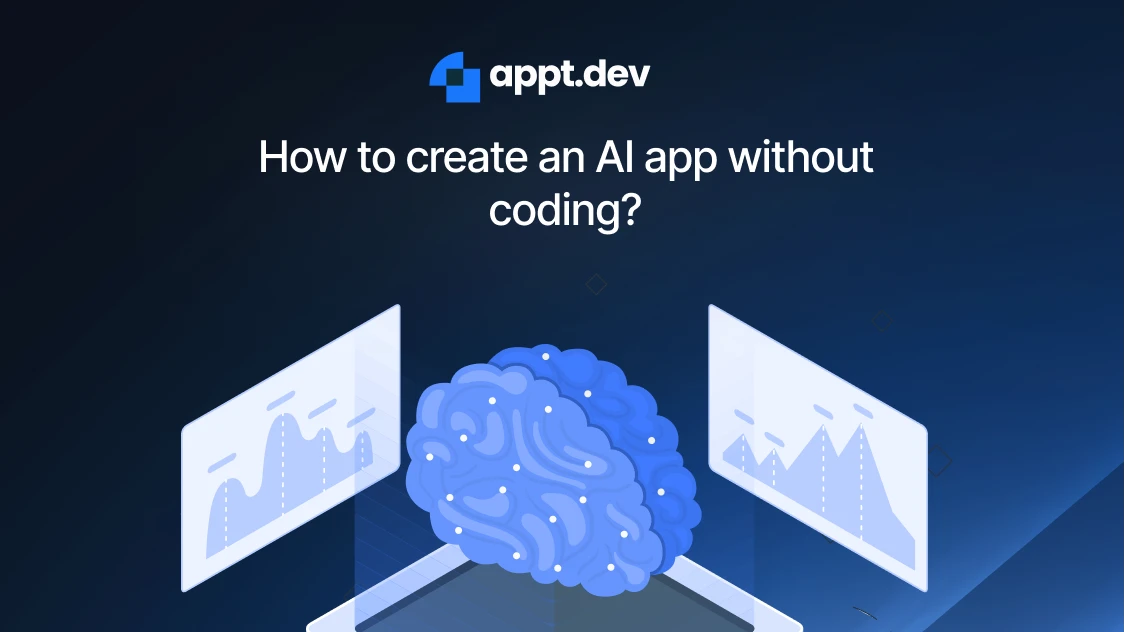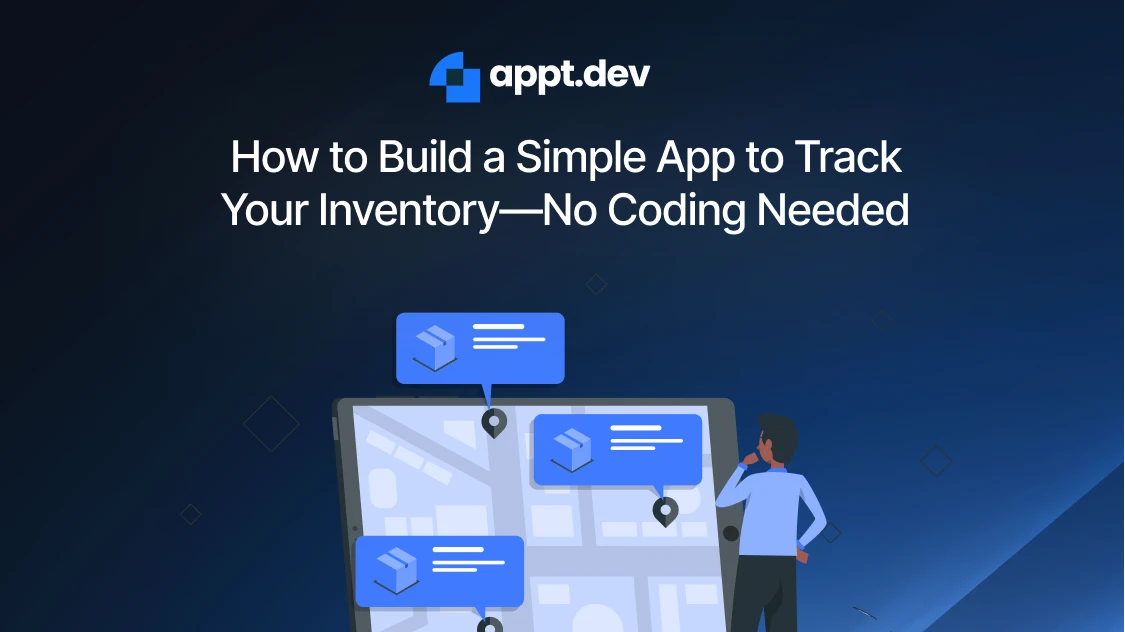What are Low-Code Tools?
Low-code

Abhijeet Chowdhury
April 23, 2025 | 4 min
Share to

In today's fast-paced digital environment, businesses need to develop applications quickly without extensive coding knowledge. Low-code tools have emerged as a powerful solution to this challenge, democratizing software development and enabling rapid application delivery. This comprehensive guide explores what low-code tools are, how they work, and why they're becoming increasingly vital for businesses across industries in 2025.
Understanding Low-Code Development
Low-code development represents a significant shift in how we approach software creation. Rather than writing thousands of lines of code, low-code platforms provide visual interfaces that simplify the development process dramatically.
What Exactly Are Low-Code Tools?
Low-code platforms allow you to build software by clicking and dragging elements around rather than typing code. Think of it as the Lego set of app development. You snap together pre-built blocks to form functional apps much faster than if you were coding each line by hand. These platforms have features for designing layouts, handling data, and setting up workflows. They also let you connect apps to other services without needing to write complex code [1].
Low-code development requires 'less' coding knowledge and expertise compared to the conventional coding system that relies on seasoned coders with in-depth knowledge of computer languages, development environments, deployment procedures, and testing protocols[2]. This approach bridges the gap between traditional programming and no-code development, offering a middle ground that balances ease of use with flexibility.
How Low-Code Platforms Work
Low-code platforms operate through visual development environments that showcase the 'behind-the-scenes' of web development. Instead of repeating primary lines of code, users construct flowcharts, enabling point-and-click development, experimenting, testing, and implementation to achieve the desired function or capability [2]. These platforms typically include:
- Visual designers for creating user interfaces
- Workflow editors for defining business processes
- Data modeling tools for structuring information
- Built-in connectors for integrating with other systems
- Security and deployment features
The visual nature of these tools makes them accessible to a wider audience while still providing the power needed for complex applications.
The Market Growth of Low-Code Development
Low-code development has seen explosive growth in recent years, reflecting its increasing importance in the software development landscape. Gartner estimated that low-code app platforms would account for over 65% of development by 2024 [2], demonstrating the rapid shift toward these more accessible development approaches. This growth is driven by several factors, including:
- The increasing demand for digital transformation across industries
- The ongoing shortage of skilled developers
- The need for faster application delivery to meet business needs
- The rising importance of business agility in competitive markets
- The push for cost-effective development solutions
As organizations continue to digitize their operations and processes, low-code platforms provide a way to accelerate development without the traditional constraints of coding expertise and lengthy development cycles.
Low-Code vs. No-Code: Understanding the Differences
While often mentioned together, low-code and no-code platforms serve different purposes and target different user groups. Understanding these differences is crucial for selecting the right approach for your needs.
What is No-Code?
No-code is the simpler version of low-code, which relies upon a visual development interface, where non-technical users can quickly create websites or applications without the need for coding or outside help [2]. These platforms prioritize simplicity and ease of use, often at the expense of customization and flexibility.
Key Differences Between Low-Code and No-Code
The primary distinctions between these approaches lie in their target users, capabilities, and use cases:
Technical Expertise Required: Low-code platforms still expect some technical understanding, while no-code platforms are designed for users with no programming knowledge.
- Customization Capabilities: Low-code platforms typically allow developers to add custom code when needed, while no-code platforms generally don't provide this option.
Complexity of Applications: Low-code platforms can handle more complex applications with sophisticated logic and integrations, while no-code platforms excel at simpler applications.
Target Users: Low-code platforms target both professional developers and technically inclined business users, while no-code platforms primarily target business users and citizen developers.
"No-code platforms are ideal for developing applications that address small business problems. Low-code platforms, on the other hand, make it feasible for development teams to create and deploy high-performance enterprise applications."
According to Michele Rosen, research manager for Low-Code, No-Code, and Intelligent Developer Technologies at IDC, "The number of no-code developers worldwide is expected to double in the next three years, crossing two million..." [2]. This growth reflects the increasing democratization of software development.
Features of Low-Code Platforms
Low-code platforms provide a versatile set of features that enable users to handle a variety of programming tasks. They make building more complex systems easier for even less tech-savvy professionals [1].
Essential Low-Code Platform Capabilities
When evaluating low-code platforms, look for these key features: Drag-and-Drop Interface: This feature lets you design and build an application without writing much code1. Users can visually compose applications by dragging components onto a canvas and configuring their properties.
Visual Modeling Tools: Workflow visuals and data models help you better understand and design the application1. These tools provide graphical representations of application logic, data relationships, and user interfaces.
Templates: You can build applications faster using tested and proven pre-built elements[1]. Templates provide starting points for common application types and can significantly accelerate development.
Cross-Platform Compatibility: This ensures your applications work across different devices and operating systems [1]. Modern low-code platforms support responsive design and multiple device types.
Integration Capabilities: Connectivity allows your applications to integrate with existing and third-party systems [1]. This is crucial for enterprise applications that need to work with legacy systems and external services.
Scalability: Scalable platforms can handle increasing workloads and user numbers without performance losses [1]. This is essential for applications that may grow in usage over time.
Security Features: Robust security protocols protect your applications from unauthorized access and data breaches [1]. Enterprise-grade security is a must-have for any serious application.
Automated Testing Tools: Automated testing keeps your apps bug-free and running smoothly [1]. These tools help ensure quality and reduce the risk of errors in production.
Reporting and Analytics: Analytics tools help you track user interactions and system performance to improve decision-making [1]. These insights can guide ongoing optimization and enhancement.
Rapid Prototyping: Creating prototypes speeds up refinement and helps you better meet user needs [1]. Quick iteration is a core advantage of low-code development.
Most low-code platforms have features that can help you build efficient, reliable, and scalable applications. However, it is essential to choose a platform that offers features to meet your specific needs.
Business Benefits of Low-Code Development
Low-code platforms offer significant business advantages beyond just simplifying development. Understanding these benefits can help organizations build a compelling case for adoption.
Reduced Development Costs
According to a global survey by Statista, apps built using low-code have helped bring down development costs by a staggering 53% [2]. This cost reduction comes from several factors:
- Shorter development cycles requiring fewer person-hours
- Less specialized programming expertise needed
- Reduced maintenance and update costs
- Lower training requirements for developers
- Decreased reliance on external development resources
Accelerated Time-to-Market
Low-code platforms dramatically reduce the time required to move from concept to deployed application. This acceleration enables:
- Faster response to market opportunities
- Quicker implementation of business process improvements
- Reduced time spent in development and testing phases
- Ability to iterate and enhance applications more frequently
- Competitive advantage through digital agility
Increased Revenue Opportunities
Beyond cost savings, low-code can directly contribute to revenue growth. The same Statista survey mentioned that low-code applications increased revenue by 58% for customer-focused apps [2]. This revenue impact comes from:
- Faster deployment of revenue-generating applications
- Improved customer experiences leading to higher retention
- Ability to rapidly adapt to changing market conditions
- More resources available for innovation rather than maintenance
- Enhanced ability to test and validate new business ideas
Bridging the IT Skills Gap
With the ongoing shortage of skilled developers, low-code platforms provide a way to address development needs without requiring extensive technical expertise:
- Enabling business users to create applications without coding knowledge
- Allowing existing developers to be more productive
- Reducing the learning curve for new technology adoption
- Democratizing application development across the organization
- Freeing specialized developers to focus on more complex problems
Common Use Cases for Low-Code Platforms
Low-code platforms are versatile and can be applied to various business needs. Here are some of the most common use cases:
Web Application Development
Low-code platforms excel at creating web applications, from simple customer portals to complex enterprise systems. According to Gartner, about 79% of businesses build a web application with citizen development within a year [3]. These applications can include:
- Customer self-service portals
- Employee portals and intranets
- Partner collaboration platforms
- Data collection and management systems
- Content management systems
Mobile App Development
As mobile becomes increasingly important for business operations, low-code platforms offer streamlined approaches to mobile app development:
- Cross-platform mobile applications
- Progressive web apps
- Mobile-responsive web applications
- Field service applications
- Mobile data collection tools
ApptDev, for example, emphasizes their platform's ability to help develop mobile applications through an intuitive low-code interface [4].
Business Process Automation
Low-code platforms are particularly effective for automating business processes:
- Workflow automation
- Approval processes
- Document management
- Case management
Resource scheduling and allocation
These automation solutions can dramatically improve operational efficiency while reducing manual errors.
Data Management and Analysis
Many organizations use low-code platforms to create applications that help manage and analyze data:
- Custom databases
- Reporting dashboards
- Data visualization tools
- Analytics applications
- Data collection and processing systems
Legacy System Modernization
Low-code platforms can help organizations modernize legacy systems without the cost and risk of complete redevelopment:
- Creating modern interfaces for legacy systems
- Building integration layers between old and new systems
- Gradually replacing components of legacy applications
- Extending legacy functionality with new features
Rapid Prototyping
Low-code tools excel at quickly creating functional prototypes that can be tested with users and stakeholders. ApptDev specifically mentions this capability, noting that with their platform, you can "create a Minimum Viable Product (MVP) in no time. Test your app with real users, gather feedback, and refine it quickly — all within the platform" [4].
Types of Low-Code Tools
The low-code landscape includes a variety of platform types, each designed to address specific needs and use cases:
General-Purpose Application Development Platforms
These comprehensive platforms support the development of a wide range of applications, typically including:
- Web and mobile application development
- Data management capabilities
- Workflow and process automation
- Integration tools
- Deployment and management features
Business Process Management (BPM) Platforms
These platforms focus specifically on automating and optimizing business processes:
- Workflow design and automation
- Process modeling and optimization
- Task management and assignment
- Performance monitoring and analytics
- Integration with existing systems
Database Application Builders
These tools specialize in creating applications that primarily interact with databases:
- Custom database application development
- Data entry forms and interfaces
- Reporting and analytics
- Data validation and quality control
- Database management features
Mobile App Development Platforms
Focused specifically on mobile application development, these platforms offer:
- Native and cross-platform mobile app development
- Mobile-specific UI components
- Device feature access (camera, GPS, etc.)
- Offline capabilities
- App store deployment options
Industry-Specific Platforms
Some low-code platforms target specific industries with specialized features:
- Healthcare-specific solutions
- Financial services platforms
- Retail and e-commerce tools
- Manufacturing solutions
- Government and public sector platforms
AI-Powered Low-Code Platforms
The newest generation of low-code tools incorporates artificial intelligence to further accelerate and enhance the development process. ApptDev is positioned in this category, with their AI-powered low-code platform that helps handle "repetitive and complex tasks like creating schemas, designing workflows, and even deploying your app to the cloud" [4]. These AI capabilities can include:
- Automated code generation
- Intelligent data modeling
- Predictive analytics integration
- Natural language processing for requirements
- Automated testing and quality assurance
Use Cases for Low-Code Development
Low-code platforms support a wide range of application types across various industries. Here are some common use cases where low-code excels:
Process Automation
Low-code tools are ideal for automating business processes, from simple approval workflows to complex multi-step processes:
- Document Approval Systems: Streamlining the review and approval of documents across departments
- Employee Onboarding: Automating the steps required to bring new employees into the organization
- Expense Management: Creating systems to submit, review, and approve business expenses
- Customer Onboarding: Streamlining the process of registering and setting up new customers
Internal Business Applications
Organizations frequently use low-code to develop internal applications that improve operational efficiency:
- Resource Booking Systems: Applications for managing meeting rooms, equipment, or other shared resources
- Employee Directories: Customized staff directories with additional functionality beyond standard solutions
- Asset Management: Systems to track and manage physical assets throughout their lifecycle
- Time and Attendance Tracking: Applications to monitor employee work hours and attendance
Customer-Facing Systems
Low-code platforms can power customer-facing applications that enhance engagement and service:
- Customer Portals: Secure environments where customers can access account information and services
- Service Request Applications: Systems for customers to submit and track service requests
- Feedback Collection Tools: Applications for gathering and analyzing customer feedback
- Product Configuration Systems: Interactive tools for customizing products or services
Data Management and Reporting
Low-code excels at creating applications for collecting, managing, and reporting on data:
- Custom Dashboards: Visual representations of key performance indicators and business metrics
- Data Collection Forms: Applications for gathering structured data from users
- Compliance Tracking: Systems to monitor and report on regulatory compliance
- Business Intelligence Tools: Applications that analyze data and present actionable insights
The Future of Low-Code Development
Low-code development continues to evolve rapidly, with several trends shaping its future direction:
AI Integration in Low-Code Platforms
Artificial intelligence is increasingly being incorporated into low-code platforms to:
- Automate repetitive development tasks
- Suggest optimal design patterns and components
- Identify potential issues or improvements in applications
- Enhance natural language processing for business rule definition
- Enable predictive analytics within low-code applications
The Rise of Specialized Low-Code Platforms
The market is seeing increased specialization, with platforms focusing on specific industries or use cases:
- Industry-specific platforms for healthcare, finance, manufacturing, etc.
- Function-specific platforms for CRM, ERP, or HR applications
- Technology-specific platforms focused on IoT, blockchain, or AI applications
- Audience-specific platforms tailored to particular user groups or skill levels
Will Low-Code Replace Developers?
This question frequently arises in discussions about low-code development. The reality is more nuanced than a simple yes or no:
- Low-code will handle an increasing percentage of application development, with Gartner estimating that low-code app platforms would account for over 65% of development by 2024 [2].
- Rather than replacing developers, low-code is changing their role, shifting focus toward: Complex problem-solving that exceeds low-code capabilities
- Creating extensions and integrations for low-code platforms
- Architecting systems that combine low-code and traditional development
- Supporting and guiding citizen developers
- The demand for traditional development skills remains strong for: High-performance applications with specific technical requirements
- Systems requiring deep integration with specialized hardware or software
- Applications with complex algorithms or computational needs
- Core systems that form the foundation of business operations
- Low-code and traditional development will likely coexist, with organizations leveraging each approach based on specific requirements, constraints, and objectives.
Getting Started with Low-Code Development
For organizations new to low-code development, these steps can help ensure a successful start:
- Identify the Right Project Begin with a project that offers:
- Clear business value
- Manageable scope
- Well-defined requirements
- Moderate complexity
- Visible results
Avoiding mission-critical or highly complex applications for your initial project reduces risk and allows for learning.
- Assemble a Cross-Functional Team Include representatives from:
- Business stakeholders who understand the requirements
- IT professionals who can address technical considerations
- End users who will utilize the application
- Project managers to coordinate activities and resources
This diverse team helps ensure the application meets both business and technical needs.
- Invest in Training Even with user-friendly platforms, proper training accelerates adoption and improves outcomes:
- Platform-specific training for development team members
- Basic orientation for business stakeholders
- Comprehensive documentation of standards and practices
- Ongoing learning opportunities as skills advance
- Establish Governance Early Define guidelines for:
- Application approval and prioritization
- Development standards and best practices
- Security and compliance requirements
- Testing and quality assurance
- Deployment and maintenance procedures
Good governance prevents chaos as your low-code initiative grows.
- Start Small and Iterate Adopt an iterative approach:
- Begin with core functionality
- Gather feedback from users
- Make improvements based on real-world use
- Gradually add features and capabilities
- Document lessons learned for future projects
This approach reduces risk and improves the final application through continuous refinement.
How ApptDev is Transforming the Low-Code Landscape
ApptDev positions itself as an innovator in the low-code space, with a platform designed to accelerate application development without sacrificing quality or flexibility.
ApptDev's Approach to Low-Code Development
The ApptDev platform combines AI capabilities with intuitive low-code interfaces to streamline the development process:
- AI-powered automation handles repetitive tasks like schema creation, workflow design, and cloud deployment [4]
- Visual development tools make application building accessible to users with varying technical expertise
- Emphasis on rapid prototyping and iteration enables faster market validation
- Focus on delivering production-ready applications quickly without compromising quality1
Key Differentiators
ApptDev differentiates itself through:
AI Integration
While many low-code platforms offer some level of automation, ApptDev emphasizes AI-powered tools that "handle repetitive and complex tasks like creating schemas, designing workflows, and even deploying your app to the cloud" [4].
Speed to Market
ApptDev specifically positions itself as enabling founders to "launch 2x faster," creating "an app in days or weeks, not months"[4]. This focus on acceleration is particularly valuable in competitive markets where being first can provide significant advantages.
Balance of Simplicity and Power
The platform aims to provide an intuitive interface while still enabling the creation of sophisticated applications, striking a balance that makes it suitable for both technical and non-technical users.
Focus on Complete Solutions
Rather than just providing development tools, ApptDev emphasizes delivering "production-ready apps", suggesting a comprehensive approach that extends beyond just the development phase to include deployment and operation.
Structured Yet Agile Approach
ApptDev emphasizes "a structured yet agile approach to application development" [5], suggesting a methodology that combines the benefits of structure and governance with the flexibility needed for rapid iteration and adaptation.
Conclusion
Low-code development represents a fundamental shift in how applications are built and who can build them. As the statistics show, this approach is moving from an alternative methodology to the mainstream, with Gartner predicting that low-code will be responsible for more than 65% of application development activity in the near future [3].
The benefits of low-code platforms are compelling: accelerated development, reduced costs, democratized access to application creation, and the ability to address the persistent IT skills gap. While challenges remain—particularly around governance, scalability, and integration with existing systems—the trajectory is clear. Low-code is reshaping the development landscape.
For organizations considering low-code adoption, the key lies in selecting the right platform for your specific needs, implementing governance that balances innovation with control, and fostering a culture that embraces this new approach to development.
For individual developers, low-code represents both a challenge and an opportunity. Rather than replacing developers, it changes their role, potentially elevating them from routine coding tasks to focus on more complex problems, architecture, and strategy.
As we look to the future, the integration of AI with low-code platforms, exemplified by ApptDev's approach, promises to further accelerate this transformation, making application development even more accessible while simultaneously enabling more sophisticated solutions.
Whether you're a non-technical founder looking to bring your idea to life, an enterprise seeking to accelerate digital transformation, or a developer interested in expanding your toolkit, the low-code revolution offers compelling opportunities to build better applications faster.
Explore how ApptDev can transform your process by scheduling a demo today.
Citations
FAQs
Related Blogs

Can you really build an app with no-code?
In a world where digital transformation is no longer optional, the ability to create custom applications quickly has become a competitive advantage.
Read More
How to create an AI app without coding?
In today's rapidly evolving technological landscape, artificial intelligence has transformed from an exclusive domain of specialized developers to an accessible tool for businesses and individuals alike.
Read More
How to Build a Simple App to Track Your Inventory—No Coding Needed
Here’s a concise guide to building a custom inventory-tracking app on ApptDev—no coding required. You’ll learn why inventory management matters, how ApptDev’s visual tools streamline every step, and key insights to maximize efficiency. By following our six-step walkthrough, you’ll go from blank canvas to deployed app in under an hour, complete with automated reorder alerts and mobile-ready interfaces.
Read More